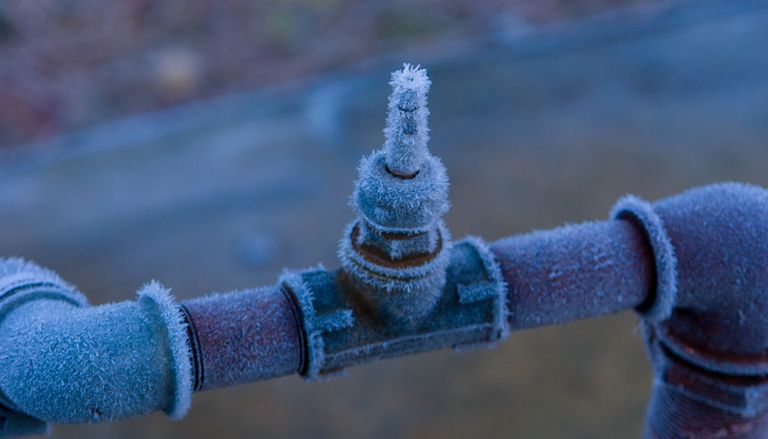They are making a number of great pointers relating to How to Prevent Your Pipes From Freezing as a whole in this post in the next paragraphs.

Winter can ruin your plumbing, particularly by freezing pipes. Here's how to prevent it from taking place and what to do if it does.
Introduction
As temperatures decrease, the threat of icy pipes boosts, possibly causing expensive repair services and water damage. Recognizing just how to avoid frozen pipelines is critical for property owners in cold environments.
Understanding Frozen Pipes
What causes pipes to ice up?
Pipelines freeze when exposed to temperature levels below 32 ° F (0 ° C) for expanded durations. As water inside the pipelines freezes, it increases, taxing the pipeline wall surfaces and possibly causing them to break.
Threats and damages
Frozen pipes can lead to water supply disruptions, home damage, and expensive repair work. Ruptured pipes can flood homes and trigger extensive structural damages.
Indicators of Frozen Pipes
Recognizing icy pipes early can avoid them from rupturing.
Just how to identify icy pipelines
Try to find reduced water flow from taps, uncommon odors or noises from pipes, and visible frost on revealed pipes.
Avoidance Tips
Insulating prone pipes
Cover pipelines in insulation sleeves or utilize heat tape to protect them from freezing temperatures. Concentrate on pipelines in unheated or outside areas of the home.
Heating strategies
Maintain indoor areas properly heated up, particularly locations with pipes. Open cabinet doors to permit cozy air to circulate around pipelines under sinks.
Securing Exterior Plumbing
Garden hoses and outdoor taps
Disconnect and drain pipes yard pipes before winter. Install frost-proof spigots or cover outside taps with protected caps.
What to Do If Your Pipes Freeze
Immediate actions to take
If you think icy pipes, maintain taps open to soothe pressure as the ice thaws. Utilize a hairdryer or towels taken in warm water to thaw pipes slowly.
Long-Term Solutions
Structural changes
Take into consideration rerouting pipes far from exterior walls or unheated areas. Include added insulation to attic rooms, basements, and crawl spaces.
Upgrading insulation
Invest in top quality insulation for pipelines, attics, and walls. Appropriate insulation helps keep consistent temperature levels and minimizes the threat of frozen pipes.
Verdict
Avoiding icy pipes requires aggressive procedures and fast actions. By comprehending the reasons, indicators, and safety nets, property owners can secure their plumbing throughout cold weather.
5 Ways to Prevent Frozen Pipes
Drain Outdoor Faucets and Disconnect Hoses
First, close the shut-off valve that controls the flow of water in the pipe to your outdoor faucet. Then, head outside to disconnect and drain your hose and open the outdoor faucet to allow the water to completely drain out of the line. Turn off the faucet when done. Finally, head back to the shut-off valve and drain the remaining water inside the pipe into a bucket or container. Additionally, if you have a home irrigation system, you should consider hiring an expert to clear the system of water each year.
Insulate Pipes
One of the best and most cost-effective methods for preventing frozen water pipes is to wrap your pipes with insulation. This is especially important for areas in your home that aren’t exposed to heat, such as an attic. We suggest using foam sleeves, which can typically be found at your local hardware store.
Keep Heat Running at 65
Your pipes are located inside your walls, and the temperature there is much colder than the rest of the house. To prevent your pipes from freezing, The Insurance Information Institute suggests that you keep your home heated to at least 65 degrees, even when traveling. You may want to invest in smart devices that can keep an eye on the temperature in your home while you’re away.
Leave Water Dripping
Moving water — even a small trickle — can prevent ice from forming inside your pipes. When freezing temps are imminent, start a drip of water from all faucets that serve exposed pipes. Leaving a few faucets running will also help relieve pressure inside the pipes and help prevent a rupture if the water inside freezes.
Open Cupboard Doors
Warm your kitchen and bathroom pipes by opening cupboards and vanities. You should also leave your interior doors ajar to help warm air circulate evenly throughout your home.

Do you appreciate reading about Prevent Frozen Pipes ? Make a comment down below. We will be happy to know your reactions about this entry. Hoping to see you back again later on. Sharing is caring. You never know, you may just be doing someone a favor. I thank you for your readership.
Book Inspection